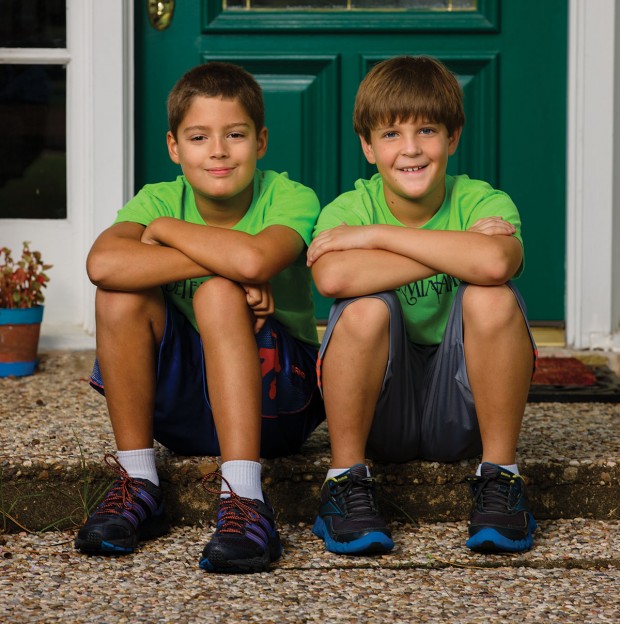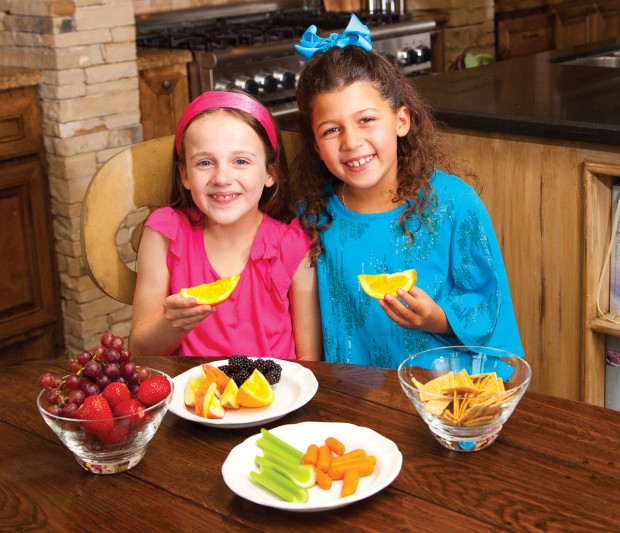Playdates and Food Allergies


When Hayden Shearer (right) hangs out with his friend Matthew Mason, Matthew's peanut allergy "is not a big issue," says Hayden's mom Deidre. (Photo: www.hartphoto.com)
When Andrew Lade was 5, the crowning event of kindergarten was a trip to an ice-cream shop.
However, Andrew had a severe allergy to milk.
Andrew’s mom visited the shop early. She and the manager found a sorbet Andrew could eat. The manager set aside a still-sealed container of it and a clean scoop. One employee was designated to recognize Andrew, the only redhead in his class.
On the big day, 5-year-old Andrew proudly stood at the counter and placed his order.
The plan went off without a hitch.
And Andrew’s mother, not wanting to hover, watched the whole thing – through binoculars – from across the street.
“We always told Andrew (who has since outgrown his allergy) that he could do anything he wanted to do; we just might have to plan more,” says Andrew’s dad, Mike Lade, who sits on the national board of FARE (Food Allergy Research & Education) and chairs FARE’s annual Food Allergy Walk in Houston (Sept. 7).
Food allergies are increasingly common. A recent study found that one in every 13 American children has one. “Chances are, you know someone,” says Cindy Mason, whose 10-year-old son Matthew is allergic to peanuts.
At least 40 percent of food-allergic children are at risk for anaphylaxis, a deadly reaction that constricts airways and causes the heart rate to plummet. According to the CDC, about 150 people die of food allergy-related anaphylaxis in the U.S. each year.

Blythe Bath (left), who has food allergies, and Bailey Raymond (right) sit down together for a snack at Bailey's house. (Photo: www.lawellphoto.com)
So, what if your child wants to invite a friend over – and that friend has a food allergy?
While food allergies must be taken seriously, protecting a child from exposure is “not a big deal,” says Jennifer Raymond. She and Catherine Devine are friends, as are their daughters, Bailey and Blythe, both 8. Blythe often comes over to play, despite having severe allergies to milk, eggs, peanuts and tree nuts.
“You absolutely can have a successful, stress-free playdate,” says Raymond.
You just need to know two things: how to prevent exposure and what to do if a reaction occurs.
Listen to the parent. Every child’s allergies are different. Don’t be surprised if the parent hands you a written “food allergy action plan.”
In most cases, to have a life-threatening reaction, a food-allergic person has to ingest, not just touch, the food. However, even the smallest ingested amount can trigger a dangerous reaction. Touching can trigger milder reactions and can, for a few, even cause a dangerous reaction.
“People definitely do have to understand the concept of cross-contamination,” says Dr. Carla Davis at the Department of Pediatric Allergy & Immunology at Texas Children’s Hospital.
Saliva can transmit an allergen, so children shouldn’t share glasses or silverware. And everyone in the house should wash their hands (with soap and water, not hand sanitizer) and brush their teeth if they’ve eaten the allergenic food. Surfaces that have come in contact with the food should be washed.
“It’s wisest for no one to eat the food the child is allergic to while the child is there,” says Dr. Davis.
Of course, snacks and meals should be OK’d by the parent. “We tell Blythe that if we haven’t approved it, she can’t eat it,” says Devine.
What does a dangerous reaction look like? Symptoms of anaphylaxis can include hives, persistent vomiting, coughing, wheezing, feeling the throat tighten, difficulty speaking or swallowing, hoarseness, swelling of the tongue, lips or face, lethargy and/or turning pale or blue. The symptoms can be mild at first.
If you suspect anaphylaxis, you should use the child’s auto-injector of epinephrine. Quickly.
The most important thing to know is that there are no risks in administering epinephrine in otherwise healthy children. (There is some risk if the child also has a heart defect.) However, there is danger in waiting.
Auto-injectors are not hard to use, says Dr. David Engler of The Allergy Clinic and the Houston Allergy & Asthma Clinic. Ask the child’s parents to show you.
If the child’s symptoms do not abate, you may have to use a second injector. (Food-allergic children carry multiples.)
Meanwhile, call 911. The epinephrine is meant to hold the reaction at bay until the child can get to the hospital.
“Some people might want to call 911 first, to be sure,” says 10-year-old Matthew Mason. “I would tell them, ‘Just do it. And stay calm.’”
When asked what he would tell parents about kids with food allergies, Matthew’s friend, Hayden Shearer, says, “I would tell them that Matthew is just like any other friend. He just can’t eat certain things.”
For more information on food allergies
foodallergy.org
The website for Food Allergy Research & Education (FARE) contains much useful information.
foodallergywalk.org/site/c.ahKPI6MIIeIYE/b.8529309/k.BED9/Home.htm
Information about FARE’s annual Food Allergy Walks, held around the country, including the one in Houston on Saturday, Sept. 7.
allergyclinic.com
Dr. David Engler has posted several articles on food allergies on the website for his four Houston clinics, three called The Allergy Clinic and one, in the Museum District, called the Houston Allergy & Asthma Clinic.
allergyhome.org
This website, created by two allergists from Harvard Vanguard Medical Associates, a nonprofit medical group practice in Massachusetts, features slide-show presentations, including ones specifically for other parents who might find themselves caring for a child with food allergies.
huffingtonpost.com/carissa-k/what-its-like-to-be-an-al_b_3143696.html
An essay, by a parent whose child has food allergies, on what it’s like to be an “allergy mom,” which appeared in The Huffington Post on April 24, 2013.
cdc.gov/healthyyouth/foodallergies
Information about food allergies in children under the age of 18 from the Centers for Disease Control.
fda.gov/Food/ResourcesForYou/Consumers/ucm079311.htm
Information about food allergies from the U.S. Food and Drug Administration.
Want more buzz like this? Sign up for our Morning Buzz emails.
To leave a comment, please log in or create an account with The Buzz Magazines, Disqus, Facebook, or Twitter. Or you may post as a guest.


